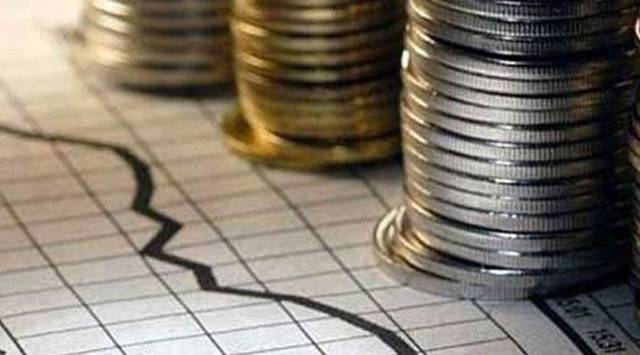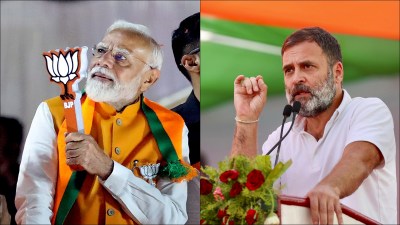- India
- International
With expenditure lagging, Centre likely to use additional fiscal space to rein in deficit
🔴 Nominal GDP estimate of 17.6 pre cent leaves space of around Rs 65K crore
 The Union Budget for 2021-22 had assumed a 14.4 per cent nominal GDP growth for the Budget Estimates (BE).
(Representative image)
The Union Budget for 2021-22 had assumed a 14.4 per cent nominal GDP growth for the Budget Estimates (BE).
(Representative image)With the nominal gross domestic product (GDP) coming in at a higher level of 17.6 per cent in the first advance estimates released Friday than the FY22 budget level of 14.4 per cent, the government is likely to get more fiscal headroom.
Economists, however, said that given the lower-than-budgeted pace of government expenditure so far this fiscal, there is a possibility that this additional fiscal space could come in handy to present a lower fiscal deficit rather than being used to kick off any additional spending during the remaining quarter of FY22.
The Union Budget for 2021-22 had assumed a 14.4 per cent nominal GDP growth for the Budget Estimates. On Friday, the National Statistical Office (NSO) released the first advance estimates, which projected a real GDP growth rate of 9.2 per cent and nominal GDP growth rate of 17.6 per cent for the financial year 2021-22.
As per estimates by economists, a higher nominal GDP implies the government’s fiscal deficit could be around 6.5 per cent of the GDP as against the budgeted target of 6.8 per cent of the GDP. Or, in other terms, it translates into an additional fiscal space of around Rs 65,000 crore.
Experts, however, said given that the government’s expenditure has kept a slower-than-budgeted pace so far, it is unlikely to meet the target in the remaining part of the ongoing fiscal.

“The government has a higher fiscal space, which will help them meet the fiscal deficit target. The problem is that fiscal space may not mean much because as of now the government is underspending compared to its original budgeted amount. They can spend more (with the additional fiscal space). But by the end of the third quarter, government expenditure was only around half of the budgeted target, so the probability of them spending the remaining half of the budgeted amount in the last quarter is close to zero. Then this additional fiscal space doesn’t mean anything. What will happen is that it will end up showing a lower fiscal deficit. At the moment, they cannot use the additional fiscal space because they haven’t even met the original budgeted target,” Pronab Sen, former Chief Statistician of India said.
According to the Controller General of Accounts, the government has spent 59.6 per cent of its total budgeted amount till November-end. In the year-ago period, the Centre had spent 62.7 per cent of its budgeted expenditure in the same period.
It is also expected that the GDP estimate for government expenditure will get revised downwards for the October-March period of FY22 going ahead.
“The year-on-year growth projected by the NSO in the components of GDP in H2 FY2022 varies sharply from a muted 1.8% for private final consumption expenditure to a moderate 6.1% for gross fixed capital formation, to a rather high 13.9% for government final consumption expenditure. While we do expect the government of India’s spending to be back-ended in H2 FY2022, this is similar to the situation in H2 FY2021, based on which we anticipate a lower growth of GFCE (government final consumption expenditure) in the latter half of the current fiscal,” ICRA chief economist Aditi Nayar said.
The components of GDP get revised later on at the time of second advance estimates and provisional estimates.
For instance, government final consumption expenditure for 2020-21 was estimated at Rs 17.47 lakh crore (released in January last year), which was subsequently revised down to Rs 15.87 lakh crore in second advance estimates, and then to Rs 15.86 lakh crore in the provisional estimates. The second advance estimates are released by February-end, while provisional estimates are released by May-end of the next fiscal year.
As per the first advance estimates of GDP for FY22 released Friday, on the expenditure side, government final consumption expenditure is seen 7.6 per cent higher than FY21 and 10.7 per cent higher than FY20.
Investment activity, as reflected by the buoyant gross fixed capital formation (GFCF), is seen growing 14.9 per cent in FY22 compared with FY21 and 2.6 per cent higher than pre-pandemic year of FY20. Consumption demand, which is 55 per cent of the GDP, is estimated to remain sluggish, below the pre-Covid year (2019-20) levels.
Apr 25: Latest News
- 01
- 02
- 03
- 04
- 05









































